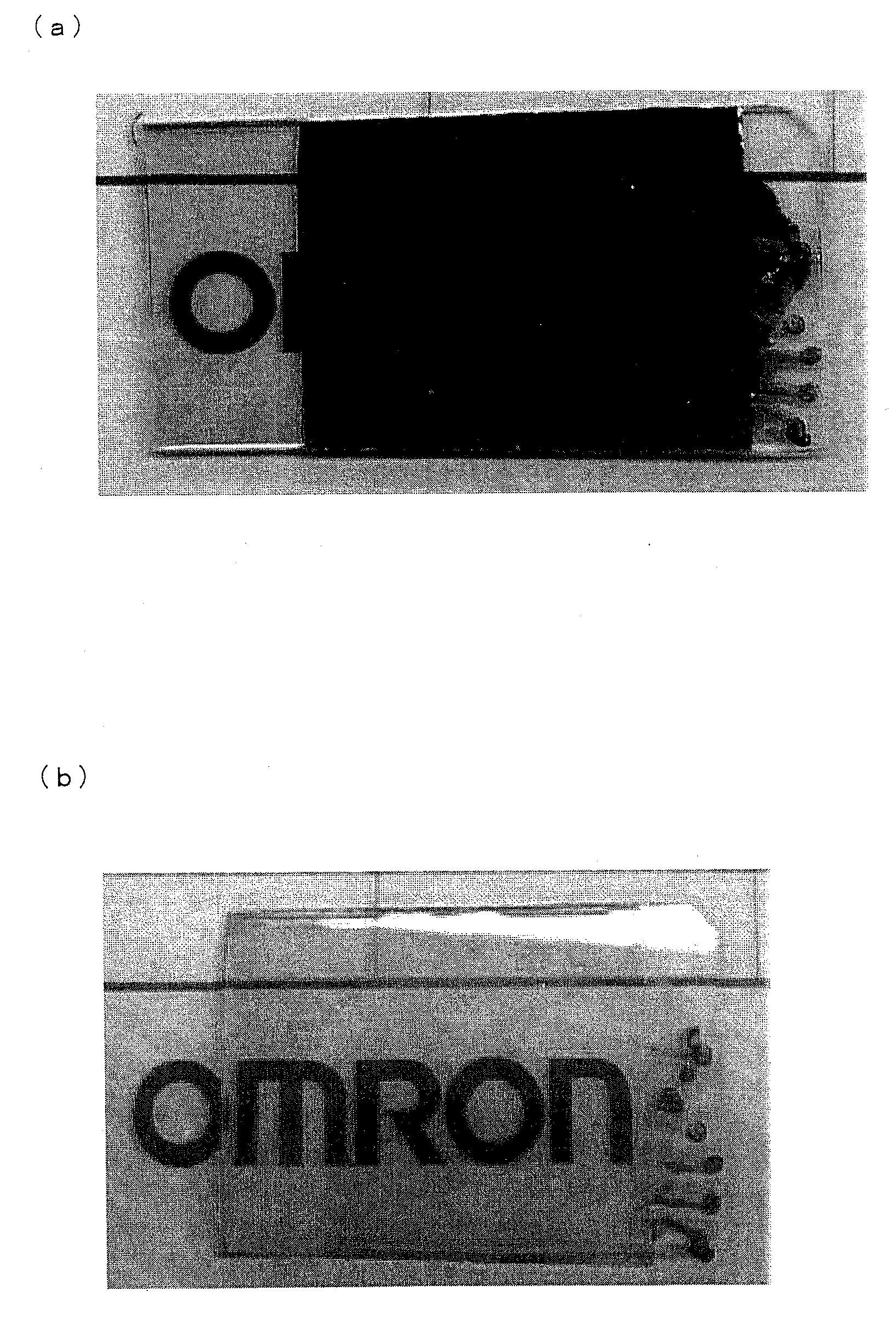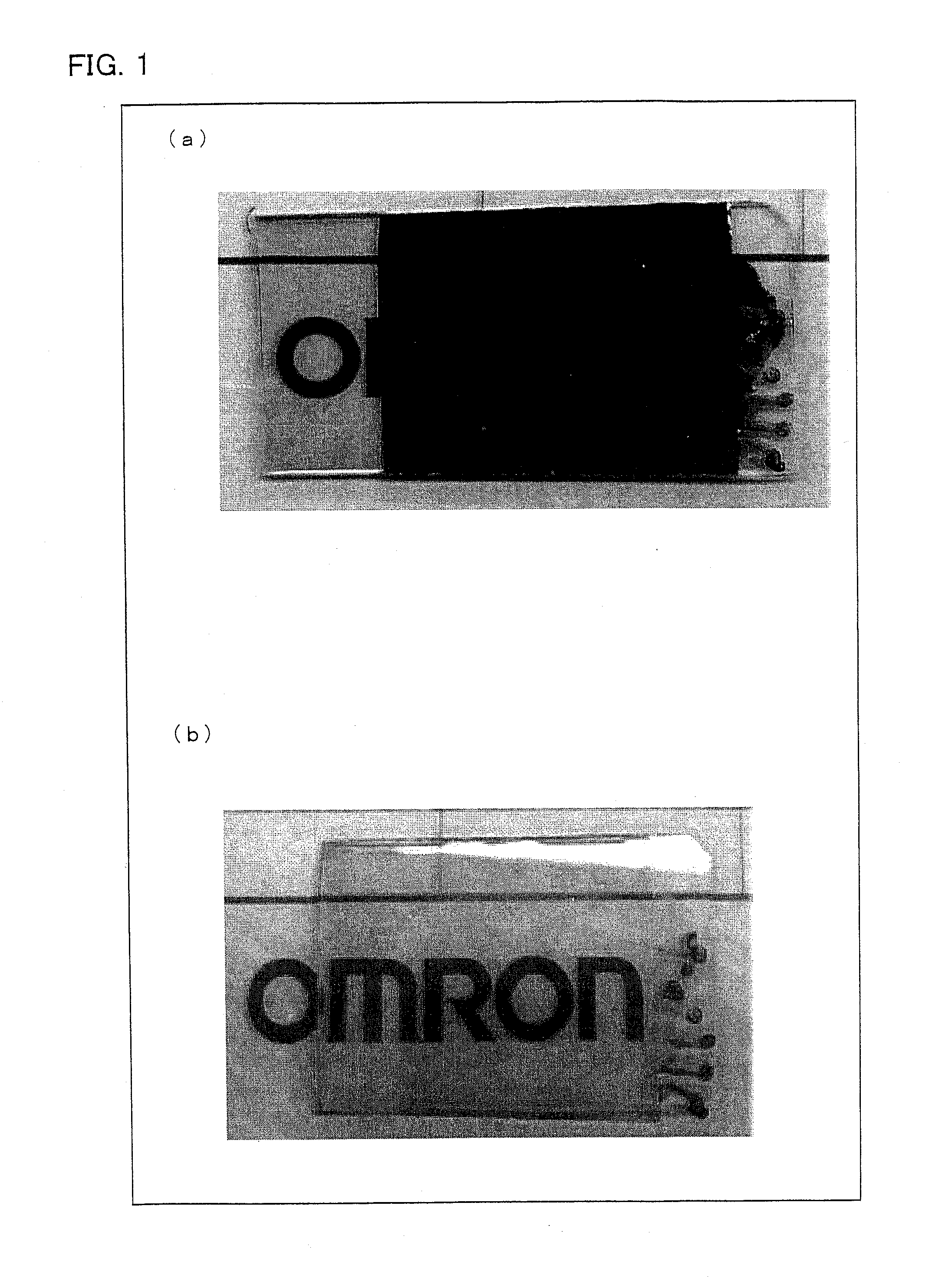Process for producing metal film, metal film and use of the metal film
- Summary
- Abstract
- Description
- Claims
- Application Information
AI Technical Summary
Benefits of technology
Problems solved by technology
Method used
Image
Examples
examples
Preparation of a Primer Composition and Formation of an Organic Film
[0182]In order to provide a primer composition, a chemical liquid in which compounds shown in Table 1 were mixed with one another in such a manner that contents of the compounds amount to 100% by weight was prepared and applied onto glass slides by a spin coat method. Then, with use of an ultraviolet irradiation device (PL 16-110, manufactured by SEN Lights Corporation), the glass slides were irradiated with an ultraviolet ray for 20 minutes so as to form the organic films A to I thereon.
[0183]As an addition polymerizable compound including three or more reactive groups, pentaerythritol triacrylate (product name: PE-3A, manufactured by Kyoeisha Chemical Co., Ltd.) was used.
[0184]As an addition polymerizable compound including an acid group, 2-acryloyloxyethyl phthalic acid (product name: HOA-MPL, manufactured by Kyoeisha Chemical Co., Ltd.), 2-acryloyloxyethyl hexahydrophthalic acid (product name: HOA-HH, manufactur...
example 8
[0206]The glass substrate used in Examples 2 and 3, to which a primer composition had been applied, was irradiated with an ultraviolet ray at 20 mW / cm for 2400 seconds by an UV irradiation device (PL16-110, manufactured by SEN Lights Corporation) so as to harden the primer composition. Then, the glass substrate was held in an 8M KOH at 40° C. for 10 minutes, and washed with water. After that, the glass substrate was held in a 100 mM ZnCl2 aqueous solution at 25° C. for 15 minutes, and then washed with distilled water. Subsequently, the substrate was held in an aqueous solution, in which 25 mM Na2CO3 and 25 mM NaHCO3 were mixed in the volume ratio of 6:4, at 50° C. for 15 minutes. As a result, a lacteous zinc oxide film (with a thickness of approximately 100 nm) with a surface resistance of 5 MΩ / square and a transmissivity of 40% was obtained.
example 9
[0207]Conditions of the metal salt generating step were studied using the organic film B used in Example 2.
[0208]A metal film was obtained by subjecting the glass slide, on which the organic film B had been formed, to the following steps:
[0209](1) As shown in Table 2, the following experimental groups were prepared: (i) The glass substrate was dipped in a 5 M potassium hydroxide aqueous solution at 40° C. and held for 10 minutes; (ii) The glass substrate was dipped in a M potassium hydroxide aqueous solution at 40° C. and held for 5 minutes; (iii) The glass substrate was dipped in a 5 M potassium hydroxide aqueous solution at 40° C. and held for 2 minutes; (iv) The glass substrate was dipped in a 5 M potassium hydroxide aqueous solution at 30° C. and held for minutes.
[0210](2) After the time mentioned in (1) had passed, the glass substrate was sufficiently washed in distilled water.
[0211](3) The glass substrate was dipped in a 100 mM of InCl3 aqueous solution at 25° C. and held for ...
PUM
| Property | Measurement | Unit |
|---|---|---|
| Shape | aaaaa | aaaaa |
| Hydrophilicity | aaaaa | aaaaa |
| Surface activity | aaaaa | aaaaa |
Abstract
Description
Claims
Application Information
 Login to View More
Login to View More - R&D
- Intellectual Property
- Life Sciences
- Materials
- Tech Scout
- Unparalleled Data Quality
- Higher Quality Content
- 60% Fewer Hallucinations
Browse by: Latest US Patents, China's latest patents, Technical Efficacy Thesaurus, Application Domain, Technology Topic, Popular Technical Reports.
© 2025 PatSnap. All rights reserved.Legal|Privacy policy|Modern Slavery Act Transparency Statement|Sitemap|About US| Contact US: help@patsnap.com


